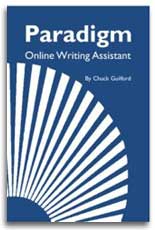One essential characteristic of argument is your sense of an adversary. You aren't simply explaining a concept to someone who will hear you out and accept or reject your idea on its merit. Argument assumes active opposition to your proposition. To win acceptance, then, you must not only explain and support your proposition, but also anticipate and overcome objections that the opposition might raise.
Argument assumes active opposition to your proposition.
In anticipating your opposition, consider questions like the following:
How strong is the opposition?
What arguments might it use against my proposition?
How can I refute these arguments?
Will I have to concede any points?
Which of my arguments might the opposition try to discredit?
How closely does my reader identify with the opposition?
Can I see any weak links in the opposition's thinking?
To firm up your impressions and get an overview of the opposition's case relative to your own, make a chart like the one below.
|
Pro and Con Chart |
|
| Proposition: The Medical Records department should set up an incentive program that pays all transcriptionists a bonus of ten cents a line for all lines typed over nine hundred a day. | |
| For (Pro) | Against (Con) |
| 1. Faster typists would produce more lines. | 1. Typists would not do other duties, such as paper work. |
| 2. Faster typists would make more money. | 2. Typists would try to type the easier reports. |
| 3. One less transcriptionist would be needed. | 3. Typists would do a poorer quality of work. |
| 4. One less word processing machine would be needed. | 4. Slower typists would be mad. |
| 5. Less office space would be needed. | 5. Typists could make more money than the boss. |
| 6. One less benefit package would be needed. | 6. Other people in the department would be mad. |
| 7. Less overtime would be required. | |
| 8. Less sick time would be paid. | |
Plotting your argument like this provides a balanced view of the issues. It allows you to see whether you have a chance of making your case and helps you to anticipate crucial points that may determine your success or failure.
... see the issue through your opponents' eyes, and draw out the most telling arguments they could use against you.
Don't try to look good by mentioning only weaker opposition arguments. When you work on the con side of the chart, see the issue through your opponents' eyes, and draw out the most telling arguments they could use against you. Then, when you've finished your Pro and Con Chart, look back to see if your proposition needs revision. You might also begin considering how to refute the opposition's arguments.
Activity
8.5 Make a Pro and Con Chart for each of the three arguments you've been developing. Exchange and discuss these with a partner. Which of your three propositions has the best chance of becoming a successful argumentative essay? Which points look most important?



